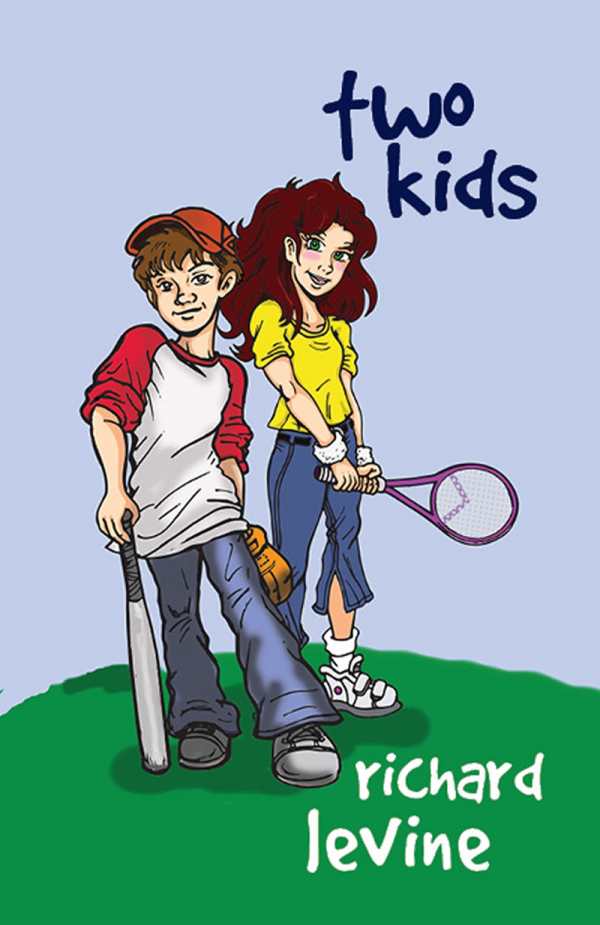Two Kids
This delightful debut novel traces the relationship of two preteens through the awkwardness of middle school.
A pair of middle school students slowly become friends over a year’s time, experiencing the highs and lows that life brings to them in Two Kids, Richard Levine’s delightfully dialogue-rich and character-driven portrayal of modern youth set in the New York suburbs.
Rob Cameron and D.C. Blau (“being known by your initials adds a little mystery to who you are”) first meet at an end-of-the-school-year birthday party for D.C.‘s cousin, Becky, a classmate of Rob’s. D.C. reminds Rob of the Disney gypsy princess, Esmeralda, but she’s just gawky enough that he feels comfortable talking to her.
D.C. is taller than everyone at the party, but her self-confidence is intact as she realizes her cousin has “more dwarf friends than Snow White.” In her humorous way, she begins mentally naming them: “I find a Happy, a Sleepy, a Sneezy and a definite Dopey. And then there’s Creepy, the eighth dwarf, the one Snow must’ve hidden out back while they made the movie.” D.C. and Rob reconnect in the fall at middle school, after a summer of dual tragedies. He wants to be a writer and always comments on events via headlines in his mind, such as: “Spellbound Boy Risks Burn from Girl’s Big Sunny Grin.” This device remains fresh throughout the book as he thoughtfully plays with words to describe the big and little moments of his life.
Bantering back and forth, they alternate telling the story of their unfolding boy-girl relationship set amid the everyday travails of middle school activities, athletic competitions, family life, and field trips. This appears to be the first true friendship with a person of the opposite gender for both Rob and D.C. as both try to gain footing in untraveled terrain, although the author does add a minor plot twist involving another student.
Other characters are as equally well drawn as the main protagonists, such as Rob’s precocious six-year-old sister, Mattie, toward whom he has a long-running pretend animosity, and D.C.’s six foot six father, whom she refers to as “Captain Strangedad, an alien from the Planet Odd.”
The book is divided into four parts consisting of forty short chapters, with such tongue-in-cheek and fun titles as “War and Peas,” “Snakes on a Lane,” “A Grand Amphibian Fib,” and “Poof the Magic Bakery.”
The story is almost a throwback to more innocent times, but it’s set in the here and now. References are made to today’s TV shows, social icons, and texting. The main characters also write verbatim, using “um” and “IDK” (I don’t know).
D.C. and Rob are little by little leaving childhood behind for a harsher reality, as a final tragedy may yet tear them apart. The author is a native of the area he writes about so well in this, his debut novel. And his writing is spot on as he captures how tweens communicate with each other in today’s world.
Upper elementary and middle school students will enjoy and identify with the language the duo uses to describe their limited but growing world as they see it. For example, they use nicknames when referring to some of their teachers; Vice-Principal Bogen is known as Bogus Man.
The book speaks to the resiliency of human nature—especially when we are young—and the stubborn belief that life will continue.
Reviewed by
Robin Farrell Edmunds
Disclosure: This article is not an endorsement, but a review. The publisher of this book provided free copies of the book and paid a small fee to have their book reviewed by a professional reviewer. Foreword Reviews and Clarion Reviews make no guarantee that the publisher will receive a positive review. Foreword Magazine, Inc. is disclosing this in accordance with the Federal Trade Commission’s 16 CFR, Part 255.

